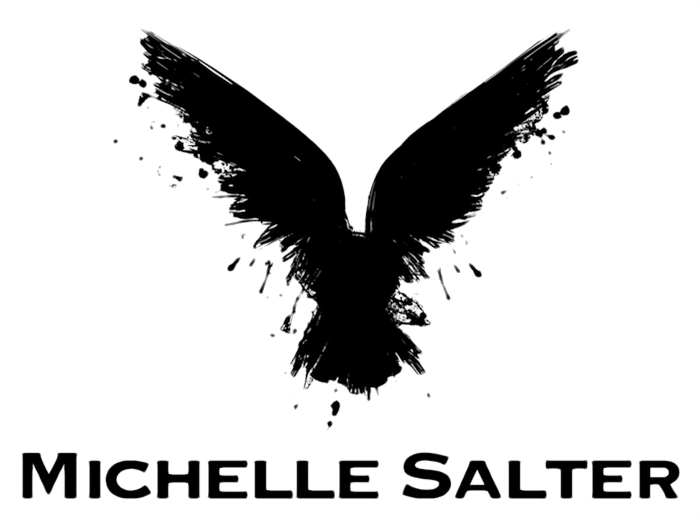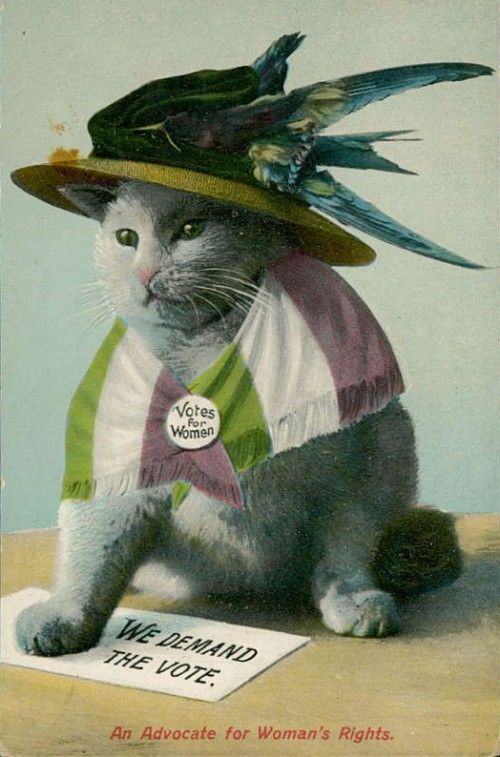Anti suffragette posters - and how the tables were turned...
In the early part of the twentieth century, the establishment used mocking cartoons to try to undermine the suffragettes.
Women have often been depicted as or associated with cats and feline imagery was commonly used in anti-suffrage posters and postcards.
The aim was to portray women as feminine and fluffy – and incapable of understanding political debate. It was implied that you might as well give the vote to a cat.

In America, cartoons portrayed the apparently devastating impact it would have on the home if women were allowed to vote. Postcards showed befuddled husbands having to tend to domestic chores to the detriment of the baby - and the cat.


Newspapers would ridicule suffrage campaigners, depicting them as ugly, bullying harridans or infantile children. However, public opinion began to change as more forceful methods were used to control suffrage demonstrations.

Anti-suffrage postcard circa 1909
On 18 November 1910, a day that became known as Black Friday, Emmeline Pankhurst, Dr Elizabeth Garrett Anderson, and Princess Sophia Duleep Singh led a 400-strong march to Parliament to see the Prime Minister.
The Prime Minister refused to see them, and the Home Secretary ordered their expulsion. When the protestors refused to disperse, they were physically and sexually assaulted by the police. The demonstration lasted over six hours, and two women later died from their injuries.
Suffragettes were now being given harsher prison sentences. Whilst in jail, some would go on hunger strike to protest at not being treated as political prisoners. A method of force-feeding was introduced that entailed warders prising open a prisoner’s mouth and inserting a long hose into their nose or throat. A mixture of milk, eggs or other liquid food was poured into the stomach. There are reports of women suffering broken teeth, bruising, bleeding, vomiting and choking as the food went down.
The Women's Social and Political Union used graphic illustrations of women being forcibly fed to shock the public.

The tactic worked, and public opinion began to turn in favour of the suffragettes and against the government.

To deal with the problem, the government introduced the 1913 Prisoners (Temporary Discharge for Ill-Health) Act. This Act allowed the early release of a prisoner if their hunger strike dangerously weakened them. However, once they were well again, they would be recalled to prison to continue their sentence, and the situation would repeat itself.
The Act became known as the Cat and Mouse Act – and this time, the cat was the aggressor. The government was seen as a cruel cat, toying with its prey.
The Women’s Social and Political Union took advantage of this and used its own cat imagery. In their designs, the cat loses its delicacy and becomes more masculine.

The result is a dramatic depiction of a woman fighting for her right to vote against a savage opponent.

